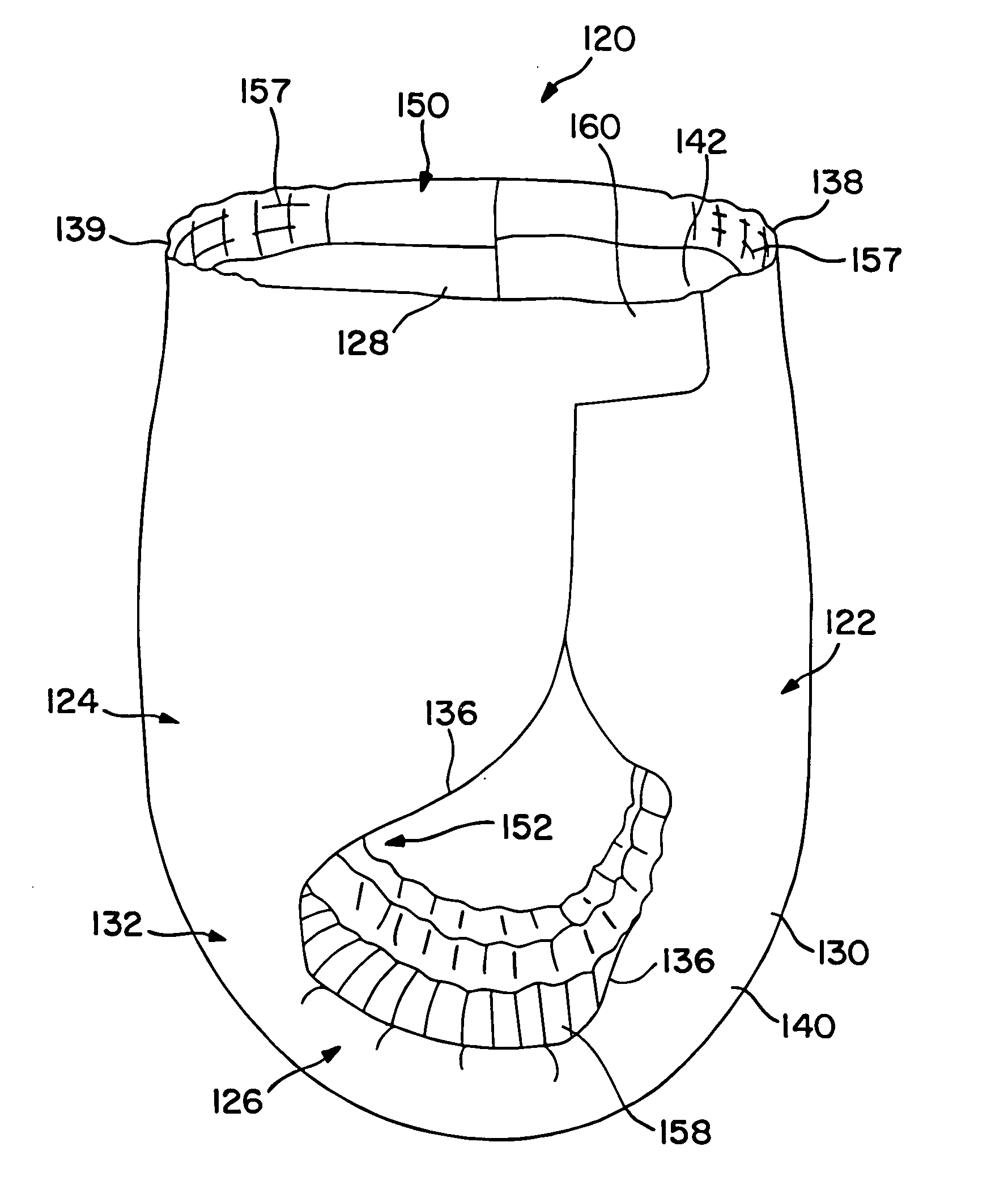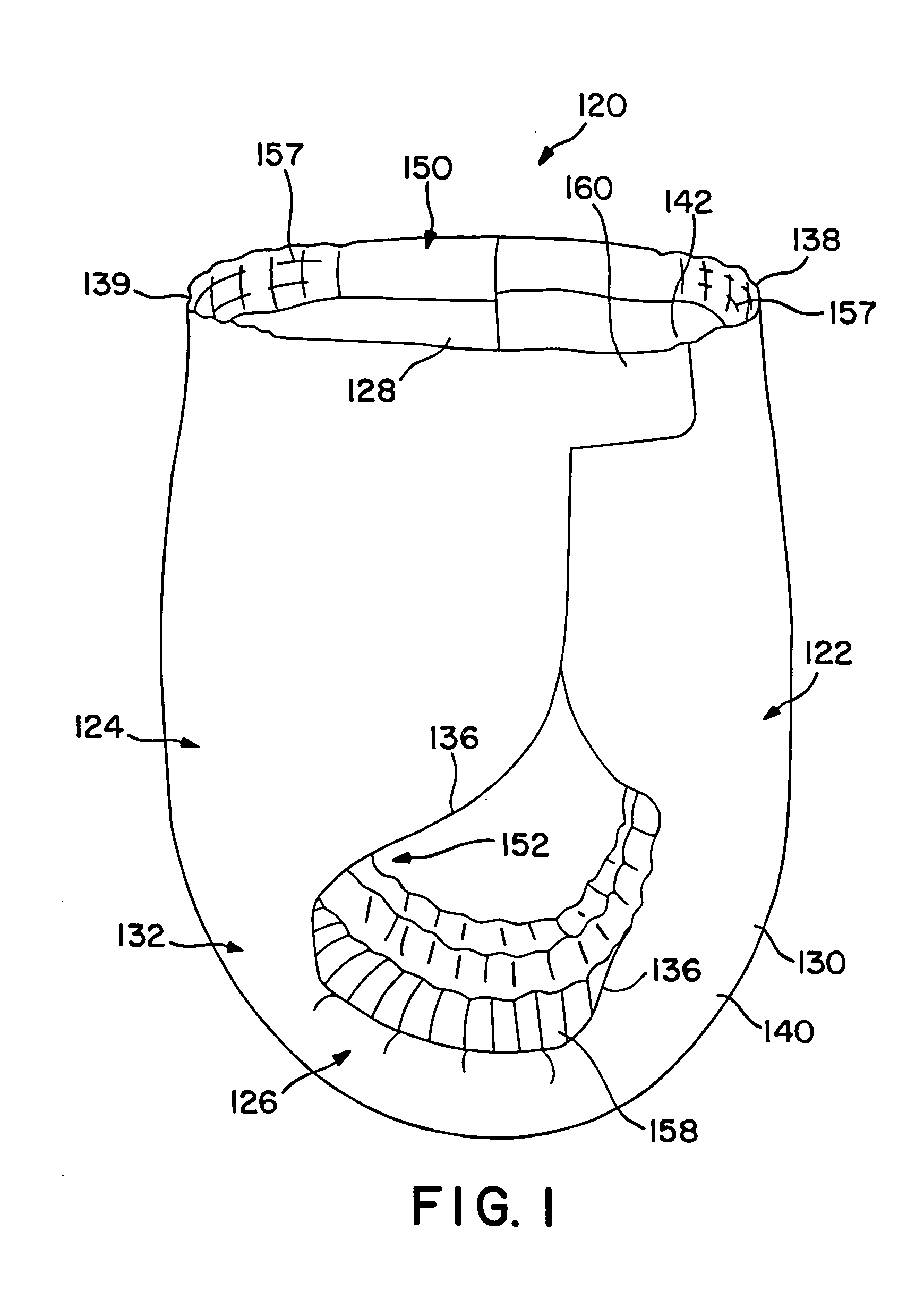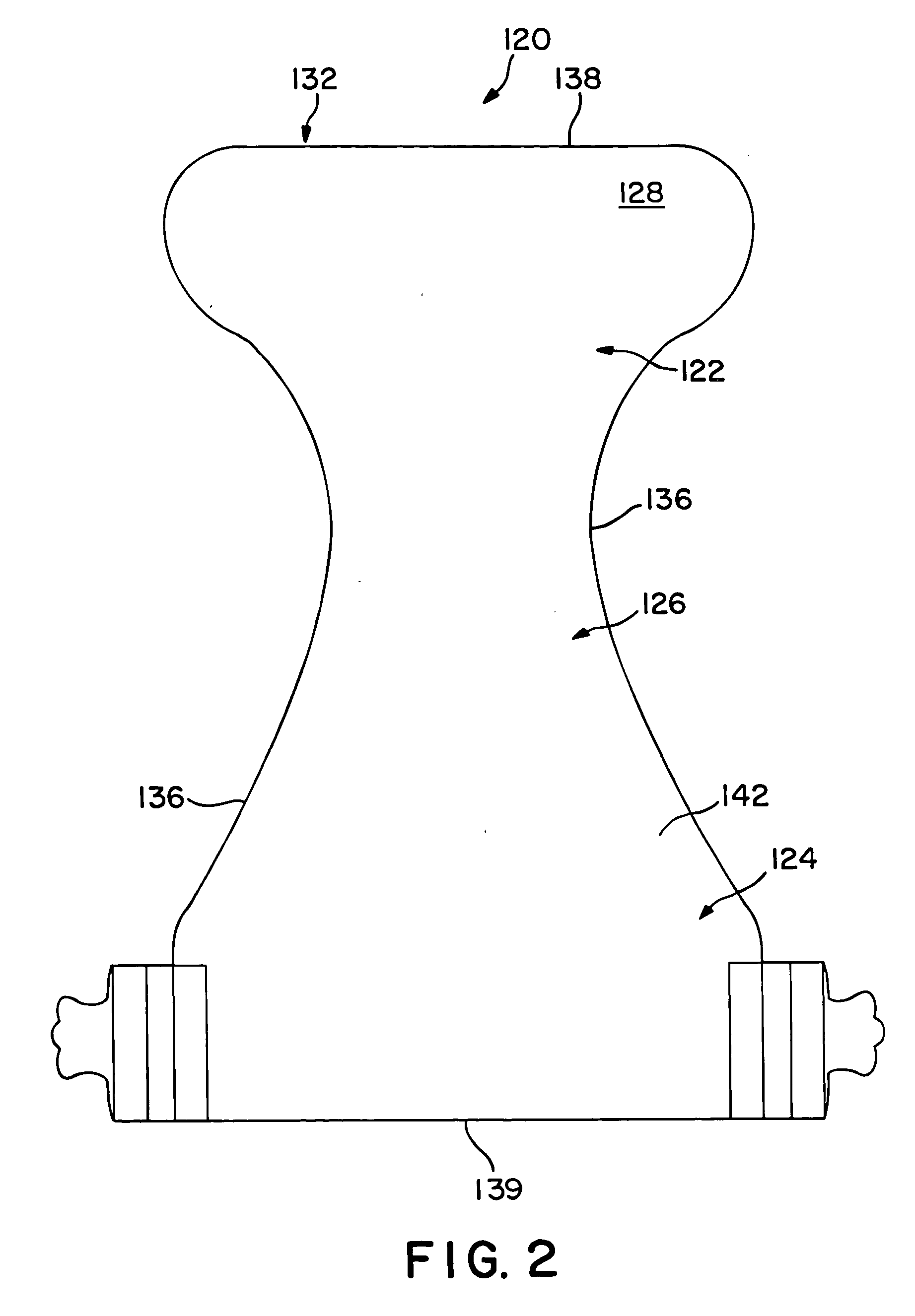Tackified amorphous-poly-alpha-olefin-bonded structures
- Summary
- Abstract
- Description
- Claims
- Application Information
AI Technical Summary
Benefits of technology
Problems solved by technology
Method used
Image
Examples
example 1
[0123] This example demonstrates the improved compression-tensile peel strength of tackified APAO onto a multiplicity of polyethylene and polypropylene surfaced films compared to neat APAO and formulated SBC (styrene block copolymer) adhesives. Twenty-one different bonded structures were compared with each of the adhesive types—SBC, APAO, and tackified APAO—bonded onto seven different polyolefin substrates. The SBC adhesive EASYMELT® 34-5610, available from National Starch & Chemical of Bridgewater, N.J. The APAO adhesive was a propylene-1-butene copolymer, RT2723, from Huntsman Polymer Corporation. The tackified APAO adhesive was formulated from 80% RT2730 APAO adhesive from Huntsman Polymer Corporation, 20% ESCOREZ™ 5320 tackifier from Exxon-Mobil, and 0.8% IRGANOX™ 1010 hindered phenol / phosphite antioxidant stabilizer from Ciba Specialty Chemicals. The seven polyolefin substrates included a polypropylene substrate and six different polyethylene films representing a range of high ...
example 2
[0128] This example demonstrates the dynamic peel strength of one particular tackified APAO adhesive at various adhesive add-on levels.
[0129] Tackified APAO, prepared from 80% RT2730 APAO adhesive from Huntsman Polymer Corporation, 20% ESCOREZ™ 5415 tackifier from Exxon-Mobil, and 0.8% IRGANOX™ 1010 hindered phenol / phosphite antioxidant stabilizer from Ciba Specialty Chemicals, was swirl sprayed onto a low density polyethylene blend (PE3) at four add-on levels of 1.5, 2.25, 3.0, and 4.5 gsm, and bonded to 0.6 osy polypropylene spunbond. Corresponding peel strengths are shown in Table 4.
TABLE 4Adhesive Add-On Correlation to Dynamic Peel StrengthAdhesiveDynamic PeelAdd-On (gsm)Strength (g / 25 mm)4.54383.02872.252171.5171
[0130] A linear relationship between adhesive add-on and dynamic peel strength was observed, with a 0.984 correlation coefficient, when the line passed through 0 peel strength at 0 add-on, as illustrated in FIG. 6.
example 3
[0131] This example demonstrates the ability of tackified APAO adhesive to reduce the tendency for film burn-through without requiring any modification of adhesive add-on, temperature, or other processing changes.
[0132] In this example, two types of film materials were bonded to 0.485 osy polypropylene spunbond liner material, such as commercially available in ULTRATRIM® diapers manufactured in August 2003 by Kimberly-Clark Corporation of Neenah, Wis., with neat APAO adhesive at various add-on levels.
[0133] A “Modified Resin Film” material was a film and nonwoven laminate material made by thermally laminating the film and nonwoven materials. The film material was composed of a multilayered structure made by coextruding a core layer with a skin layer on the outside of the film. The core layer was made of linear low density polyethylene (LLDPE) polymer with two melting transitions at about 97 degrees Celsius and 107 degrees Celsius measured using differential scanning calorimetry (D...
PUM
| Property | Measurement | Unit |
|---|---|---|
| Temperature | aaaaa | aaaaa |
| Temperature | aaaaa | aaaaa |
| Length | aaaaa | aaaaa |
Abstract
Description
Claims
Application Information
 Login to View More
Login to View More - R&D Engineer
- R&D Manager
- IP Professional
- Industry Leading Data Capabilities
- Powerful AI technology
- Patent DNA Extraction
Browse by: Latest US Patents, China's latest patents, Technical Efficacy Thesaurus, Application Domain, Technology Topic, Popular Technical Reports.
© 2024 PatSnap. All rights reserved.Legal|Privacy policy|Modern Slavery Act Transparency Statement|Sitemap|About US| Contact US: help@patsnap.com










